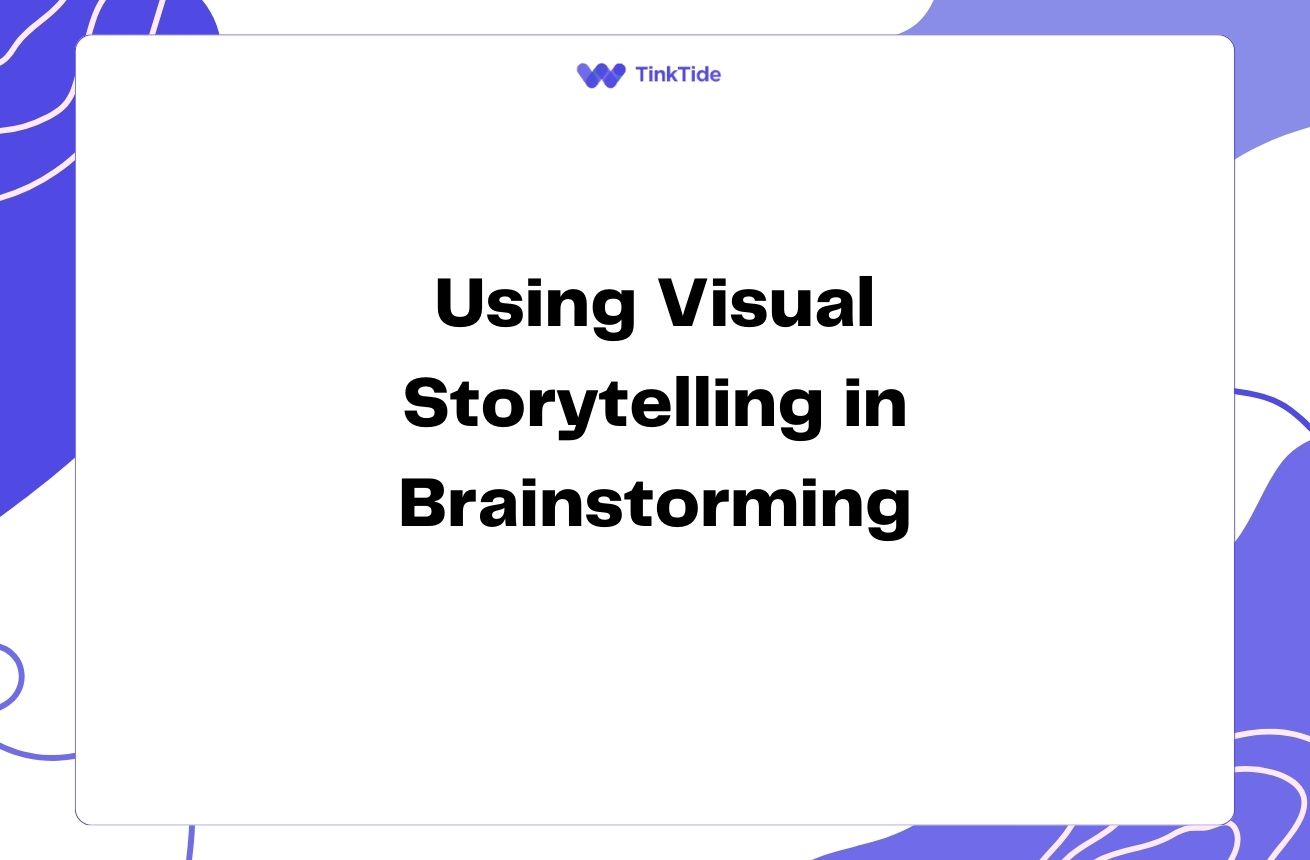Mastering Visual Thinking for Impactful Marketing Campaigns
The Power of Visual Thinking in Marketing
In today's visually-driven world, mastering the art of visual thinking is crucial for creating impactful marketing campaigns. Visual thinking allows marketers to conceptualize ideas, solve problems, and communicate complex messages in a more engaging and memorable way.
By tapping into the brain's natural ability to process visual information, marketers can create campaigns that resonate with their audience on a deeper level. According to a study by MIT, the human brain can process images in as little as 13 milliseconds, making visual content a powerful tool for conveying messages quickly and effectively.
Visual thinking techniques can help marketers brainstorm ideas, map out customer journeys, and design cohesive brand experiences across various touchpoints. By embracing visual thinking, you can unlock your team's creativity and develop marketing campaigns that stand out in a crowded digital landscape.
Key Visual Thinking Techniques for Marketers
To harness the power of visual thinking in your marketing campaigns, consider incorporating these techniques into your creative process:
- Mind mapping: Create visual diagrams to explore and organize ideas
- Storyboarding: Sketch out the visual flow of your campaign narrative
- Mood boards: Compile visual elements to define your campaign's aesthetic
- Customer journey mapping: Visualize the path your audience takes to conversion
- Infographics: Transform complex data into easily digestible visual content
Developing a Visual Strategy for Your Campaign
A strong visual strategy is the foundation of any successful visually-driven marketing campaign. Start by defining your campaign objectives and target audience. Use visual thinking techniques to brainstorm ideas that align with your goals and resonate with your audience's preferences.
Create a visual style guide that outlines the color palette, typography, and imagery style for your campaign. This ensures consistency across all visual elements and helps reinforce your brand identity. Consider using tools like Adobe XD or Figma to create mood boards and style guides that can be easily shared with your team.
Map out the customer journey using visual diagrams to identify key touchpoints where visual content can make the most impact. This approach helps you create a cohesive visual experience that guides your audience through the marketing funnel.
Remember to consider the various platforms and formats where your visual content will be displayed. Adapt your visuals to suit different social media platforms, email marketing, and website layouts while maintaining a consistent visual narrative.
Creating Compelling Visual Content
With your visual strategy in place, it's time to create the actual content for your campaign. Use visual thinking techniques to brainstorm and sketch out ideas before moving to digital production. This approach allows for quick iteration and refinement of concepts.
Incorporate storytelling elements into your visuals to create an emotional connection with your audience. Use color psychology to evoke specific emotions and reinforce your brand message. For example, warm colors like red and orange can create a sense of urgency, while cool blues and greens can convey trust and stability.
Leverage data visualization techniques to present complex information in an easily digestible format. Tools like Tableau or Datawrapper can help you create interactive charts and graphs that engage your audience and support your campaign message.
Don't forget to optimize your visual content for different devices and screen sizes. Use responsive design principles to ensure your visuals look great on both desktop and mobile devices, providing a seamless experience for your audience.
Managing and Measuring Your Visual Campaign
Effective management of your visually-driven marketing campaign is crucial for its success. Use project management tools with visual features, such as Trello or Asana, to track progress and collaborate with your team. These tools allow you to create visual boards that represent different stages of your campaign, making it easy to monitor tasks and deadlines.
Regularly review and analyze the performance of your visual content using analytics tools. Pay attention to metrics such as engagement rates, click-through rates, and conversion rates to gauge the effectiveness of your visuals. Use this data to inform future iterations of your campaign and optimize your visual strategy.
Conduct A/B tests on different visual elements to identify what resonates best with your audience. This could include testing different color schemes, image styles, or layout designs. Use the insights gained from these tests to refine your visual approach and improve campaign performance over time.
Finally, create a visual report or dashboard to present campaign results to stakeholders. This not only aligns with your visual thinking approach but also makes it easier for others to understand and appreciate the impact of your visually-driven marketing efforts.
Steps to Implement Visual Thinking in Your Marketing Process
To integrate visual thinking into your marketing workflow, follow these steps:
- Step 1: Train your team in visual thinking techniques and tools
- Step 2: Incorporate visual brainstorming sessions into your planning process
- Step 3: Develop a visual style guide for your brand and campaigns
- Step 4: Use visual project management tools to track campaign progress
- Step 5: Create a feedback loop that includes visual data analysis and reporting
Overcoming Common Challenges in Visual Marketing
While visual thinking can greatly enhance your marketing campaigns, there are some challenges you may encounter. One common issue is maintaining consistency across various visual elements and platforms. To address this, create a comprehensive brand style guide and use templates for recurring content types.
Another challenge is balancing creativity with brand guidelines. Encourage your team to think outside the box while still adhering to your brand's visual identity. Regular creative workshops can help foster innovative ideas that align with your brand standards.
Lastly, keeping up with evolving visual trends can be demanding. Stay informed by following industry leaders, attending design conferences, and regularly updating your skills. Tools like Behance and Dribbble can provide inspiration and insights into current visual trends.
Address common questions
Here are some frequently asked questions about using visual thinking in marketing campaigns:
How can visual thinking improve my marketing ROI?
Visual thinking can lead to more engaging and memorable campaigns, resulting in higher engagement rates, better brand recall, and ultimately, improved conversion rates. By creating visually appealing content that resonates with your audience, you can increase the effectiveness of your marketing efforts and achieve a better return on investment.
What tools are essential for visual thinking in marketing?
Some essential tools include mind mapping software like MindMeister, design tools such as Adobe Creative Suite or Canva, project management platforms with visual features like Trello, and data visualization tools like Tableau. These tools can help you brainstorm ideas, create visual content, manage your campaigns, and analyze results effectively.
How can I measure the success of my visually-driven marketing campaigns?
Key metrics to track include engagement rates (likes, shares, comments), click-through rates, time spent on page, and conversion rates. Use analytics tools specific to each platform (e.g., Google Analytics, social media insights) to gather this data. Additionally, conduct surveys or focus groups to gather qualitative feedback on your visual content's impact and effectiveness.
How often should I update my visual marketing strategy?
Review and update your visual marketing strategy regularly, ideally every 6-12 months. This allows you to stay current with design trends, adapt to changes in your audience's preferences, and incorporate learnings from your previous campaigns. However, be prepared to make more frequent adjustments if you notice significant changes in performance metrics or receive feedback indicating a need for change.
Can visual thinking techniques be applied to B2B marketing?
Absolutely! Visual thinking is equally valuable in B2B marketing. Use infographics to simplify complex product information, create visual case studies to showcase your solutions, and develop interactive data visualizations to present industry trends. Visual thinking can help you communicate complex B2B messages more effectively and make your content more engaging for decision-makers.
Provide additional resources
The Back of the Napkin by Dan Roam
A comprehensive guide to solving problems and selling ideas with pictures
Canva Design School
Free design courses and tutorials to enhance your visual thinking skills
Visual Thinking: Empowering People & Organizations through Visual Collaboration
A book by Willemien Brand on visual thinking techniques for business
Mural
A digital workspace for visual collaboration in marketing teams
Google's Visual Assets Guidelines
An example of comprehensive visual guidelines from a leading brand
Summarize key takeaways
Visual thinking is a powerful approach for creating and managing visually-driven marketing campaigns. By incorporating techniques such as mind mapping, storyboarding, and customer journey mapping, you can develop more engaging and effective marketing strategies.
Remember to develop a strong visual strategy, create compelling content, and use data-driven insights to continuously improve your campaigns. Overcoming challenges like maintaining consistency and balancing creativity with brand guidelines will help you master the art of visual marketing.
Start implementing visual thinking techniques in your marketing process today to unlock your team's creativity and create campaigns that truly resonate with your audience. With practice and persistence, you'll be able to harness the full potential of visual thinking to drive marketing success.
Elevate Your Marketing with Visual Thinking
Ready to transform your marketing campaigns with the power of visual thinking? Start your journey today!
Start Your Free Trial

